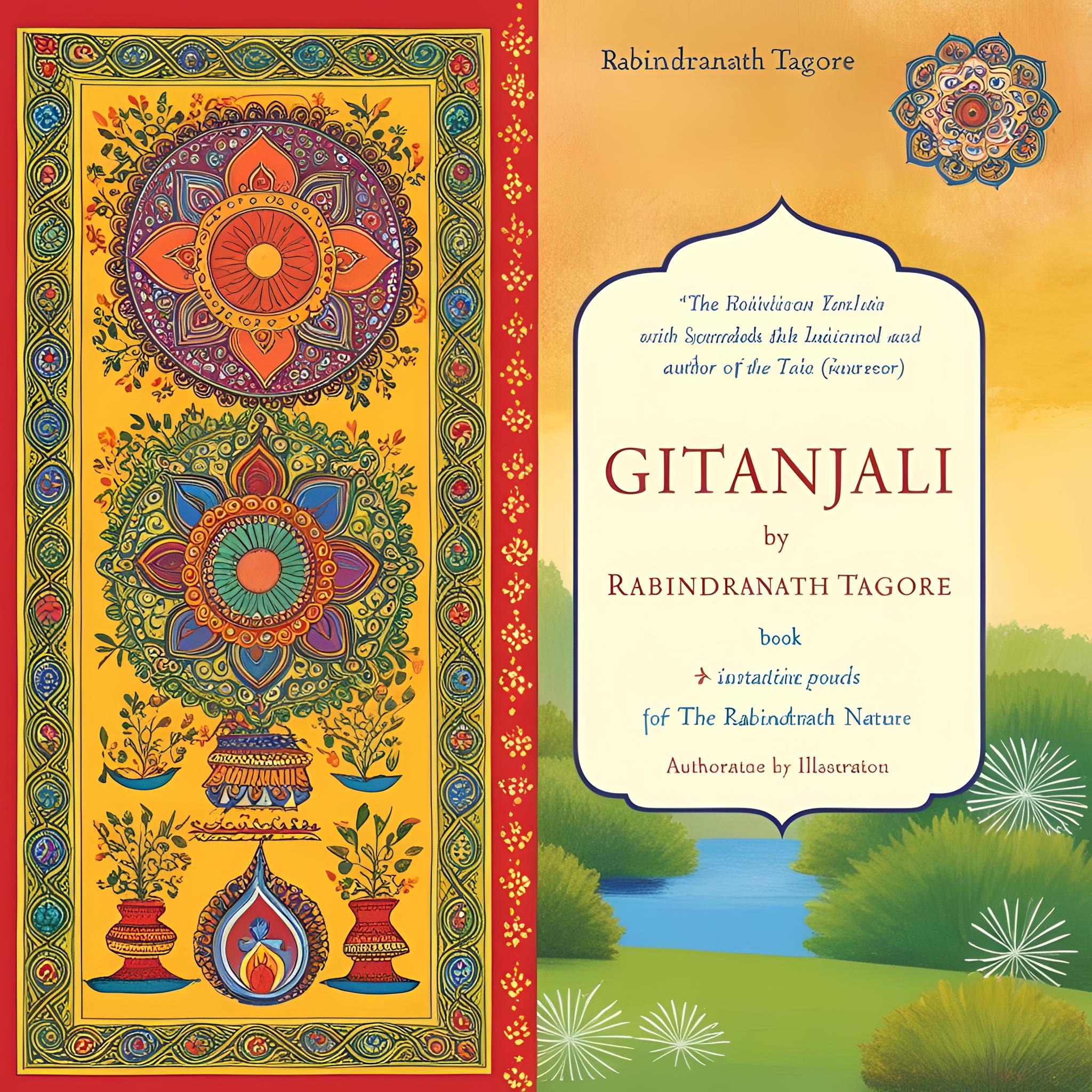Email:learnwith@introspectiveenglish.com
Physical address:
Durgapur, India


Prepare, Practise and Participate

Prepare, Practise and Participate

This poem emphasizes the philosophical aspects, the theme of devotion, reverence, love, spirituality, and the quest for God. He realizes the ever-present presence of God everywhere, finds solace and satisfaction in everything, and discovers how the poet and God are connected eternally. It presents the relationship between God and the human soul. It expresses the poet’s desire to find the divine and his realization of god.
In this poem, Tagore expresses a joyful, personalized spirituality with an emphasis on devotion, faith, and an individual’s relationship with the divine in contrast with the official rules and practices that orthodox religion teaches us.
Tagore’s poetry is not about blind religious faith but about a personal, intimate, and joyful connection with the divine.
🔹 God as an Inner Presence – He believes that God is not an external force controlling us but a guiding presence within.
🔹 Spiritual Unity – Realizing God’s inner presence unites all beings, fostering harmony, love, and peace.
🔹 Faith Beyond Rituals – Instead of strict religious doctrines, Tagore’s spirituality is free, personal, and rooted in love.
His poetry beautifully conveys the idea that God is always with us, guiding our journey and transforming life with joy and meaning.
Tagore’s poetry blends devotional intensity with lyrical beauty through repetition, metaphor, contrast, symbolism, and apostrophe. These devices enhance the universal message of divine companionship, unity, and acceptance of the unknown.
📌 Anaphora
🔹 Example: “Thou hast made me known… Thou hast given me seats… Thou hast brought the distant near…”🔹 Effect: Repetition emphasizes divine actions and gratitude.📌 Symbolism
🔹 Example: “Accustomed shelter,” “Birth and death,” “No door is shut”🔹 Effect: Represents comfort zones, spiritual journey, and enlightenment.📌 Metaphor
🔹 Example: “The one in the play of the many”🔹 Effect: Suggests divine unity within worldly diversity.📌 Antithesis
🔹 Example: “The distant near,” “The old in the new”🔹 Effect: Highlights the contrast and transformation caused by divine presence.📌 Personification
🔹 Example: “Thou hast brought the distant near”🔹 Effect: Distance is given a human-like action.📌 Parallelism
🔹 Example: “Thou hast made me known… Thou hast given me seats… Thou hast brought the distant near…”🔹 Effect: Repetitive sentence structure enhances rhythm and impact.📌 Apostrophe
🔹 Example: Direct address to God throughout the poem.🔹 Effect: Creates an intimate, devotional tone.
Gitanjali is a collection of 103 devotional poems written by Rabindranath Tagore in 1910 in Bengali. It was later translated into English in 1912 as Gitanjali: Song Offerings.
Tagore was awarded the Nobel Prize in Literature in 1913 for Gitanjali because of its profound spiritual depth, philosophical insight, and its ability to bridge Eastern and Western literary traditions.
The central themes of Gitanjali include divine love, devotion, spiritual longing, and the eternal connection between the human soul and God. The poems reflect Tagore’s deep reverence for the Almighty and his belief in spiritual fulfillment through surrender and love.
The word Gitanjali is derived from Bengali and Sanskrit, where:
“Geet” (गीत) means song
“Anjali” (अंजलि) means offeringThus, Gitanjali translates to “Song Offerings,” symbolizing prayers and devotion to God through poetry.
Tagore portrays God as an omnipresent and omnipotent force who is deeply connected with human life. The poems express the poet’s yearning for divine grace and the realization that God resides within every human soul.
The tone of Gitanjali is spiritual, reflective, and devotional. It conveys humility, longing, and gratitude towards the divine presence in life.
Gitanjali introduced Indian spiritual and philosophical ideas to the Western world. It played a crucial role in bridging Eastern mysticism with Western literary traditions, making Rabindranath Tagore the first non-European Nobel Laureate in Literature.
The original Bengali version of Gitanjali contains 157 poems, while the English translation has 103 poems.
Tagore employs various literary devices such as:
Metaphor (e.g., God as a “constant companion”)
Personification (e.g., divine presence in nature)
Symbolism (e.g., light representing enlightenment)
Imagery (e.g., nature, music, and human emotions)
Gitanjali reflects core Indian philosophical beliefs, including:
Bhakti (devotion) and surrender to God
The immortality of the soul
The cycle of birth and rebirth
Oneness between man, nature, and the divine
While Gitanjali is deeply spiritual and devotional, it is not a religious text in a conventional sense. It reflects universal themes of love, devotion, and self-discovery, making it relevant to all faiths and beliefs.
Gitanjali remains timeless because it speaks to the human soul’s eternal quest for meaning, peace, and connection with the divine. Its messages of hope, love, and unity are universal and continue to inspire readers across the world.
Gitanjali 63 is a deeply philosophical and mystical poem that portrays Tagore’s surrender to the divine, his appreciation of human unity, and his quest for spiritual fulfillment. He emphasizes that:
God is the eternal companion who remains with the soul through life, death, and beyond.
Barriers between people disappear when one realizes divine unity.
Change, though unsettling, is a part of spiritual evolution, and faith transforms uncertainty into joy.
Related Posts:
📺Watch the Video: Gitanjali (Song Offerings 63) – Meaning, Themes & Analysis
🌐 Explore More Study Guides, Literary Analysis & English Learning Tips:
🔗 Gitanjali (Song Offerings) 63: Summary & Analysis👉 Read the Full Summary🔗 Gitanjali Q&A – Insights & Analysis👉 View Questions & Answers🔗 Line-by-Line Explanation of Gitanjali (Song Offerings) 63👉 Go to Explanation
Disclaimer: This content is intended for educational purposes and is based on insights from various educational resources and personal interpretation. The poem “Gitanjali” by Rabindranath Tagore is in the public domain.
Share this content: